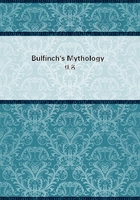
第148章
Their institution was called a monastery, and the superior an abbot, but the system had little in common with the monastic institutions of later times. The name by which those who submitted to the rule were known was that of Culdees, probably from the Latin "cultores Dei" worshippers of God. They were a body of religious persons associated together for the purpose of aiding each other in the common work of preaching the gospel and teaching youth, as well as maintaining in themselves the fervor of devotion by united exercises of worship. On entering the order certain vows were taken by the members, but they were not those which were usually imposed by monastic orders, for of these, which are three, celibacy, poverty, and obedience, the Culdees were bound to none except the third. To poverty they did not bind themselves; on the contrary, they seem to have labored diligently to procure for themselves and those dependent on them the comforts of life. Marriage also was allowed them, and most of them seem to have entered into that state. True, their wives were not permitted to reside with them at the institution, but they had a residence assigned to them in an adjacent locality.
Near Iona there is an island which still bears the name of "Eilen nam ban," women's island, where their husbands seem to have resided with them, except when duty required their presence in the school or the sanctuary.
Campbell, in his poem of Reullura, alludes to the married monks of Iona:
" -----The pure Culdees Were Albyn's earliest priests of God, Ere yet an island of her seas By foot of Saxon monk was trod, Long ere her churchmen by bigotry Were barred from holy wedlock's tie.
'Twas then that Aodh, famed afar, In Iona preached the word with power.
And Reullura, beauty's star, Was the partner of his bower."In one of his Irish Melodies, Moore gives the legend of St.
Senanus and the lady who sought shelter on the island, but was repulsed:
"Oh, haste and leave this sacred isle, Unholy bark, ere morning smile;For on thy deck, though dark it be, A female form I see;And I have sworn this sainted sod Shall ne'er by woman's foot be trod.
In these respects and in others the Culdees departed from the established rules of the Romish Church, and consequently were deemed heretical. The consequence was that as the power of the latter advanced, that of the Culdees was enfeebled. It was not, however, till the thirteenth century that the communities of the Culdees were suppressed and the members dispersed. They still continued to labor as individuals, and resisted the inroads of Papa usurpation as they best might till the light of the Reformation dawned on the world.
Ionia, from its position in the western seas, was exposed to the assaults of the Norwegian and Danish rovers by whom those seas were infested, and by them it was repeatedly pillaged, its dwellings burned, and its peaceful inhabitants put to the sword.
These unfavorable circumstances led to its gradual decline, which was expedited by the supervision of the Culdees throughout Scotland. Under the reign of Popery the island became the seat of a nunnery, the ruins of which are still seen. At the Reformation, the nuns were allowed to remain, living in community, when the abbey was dismantled.
Ionia is now chiefly resorted to by travellers on account of the numerous ecclesiastical and sepulchral remains which are found upon it. The principal of these are the Cathedral or Abbey Church, and the Chapel of the Nunnery. Besides these remains of ecclesiastical antiquity, there are some of an earlier date, and pointing to the existence on the island of forms of worship and belief different from those of Christianity. These are the circular Cairns which are found in various parts, and which seem to have been of Druidical origin. It is in reference to all these remains of ancient religion that Johnson exclaims, "That man is little to be envied whose patriotism would not gain force upon the plains of Marathon, or whose piety would not grow warmer amid the ruins of Iona."In the Lord of the Isles, Scott beautifully contrasts the church on Iona with the Cave of Staffa, opposite:
"Nature herself, it seemed, would raise A minister to her Maker's praise!
Not for a meaner use ascend Her columns or her arches bend;Nor of a theme less solemn tells The mighty surge that ebbs and swells, And still between each awful pause, >From the high vault an answer draws, In varied tone, prolonged and high, That mocks the organ's melody;Nor doth its entrance front in vain To old Iona's holy fane, That Nature's voice might seem to say, Well hast thou done, frail child of clay, Thy humble powers that stately shrine Tasked high and hard but witness mine."SKETCH OF THE HISTORY OF GREEK SCULPTURE
We have seen throughout the course of this book how the Greek and Norse myths have furnished material for the poets, not only of Greece and Scandinavia, but also of modern times. In the same way these stories have been found capable of artistic treatment by painters, sculptors, and even by musicians. The story of Cupid and Psyche has not only been retold by poets from Apuleius to William Morris, but also drawn out in a series of frescoes by Raphael, and sculptured in marble by Canova. Even to enumerate the works of art of the modern and ancient world which depend for their subject-matter upon mythology would be a task for a book by itself. As we have been able to give only a few illustrations of the poetic treatment of some of the principal myths, so we shall have to content ourselves with a similarly limited view of the part played by them in other fields of art.